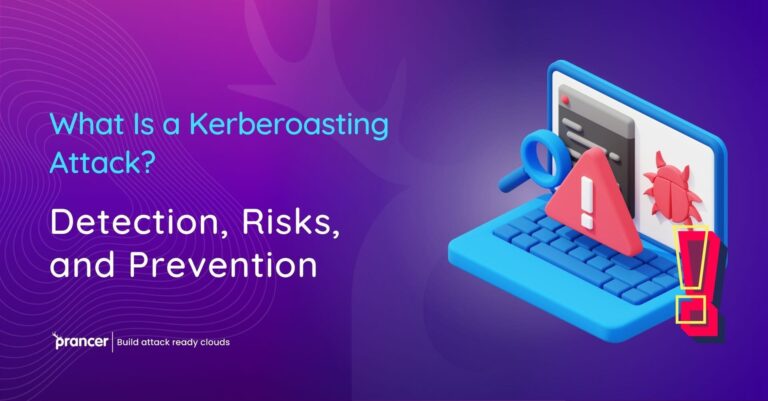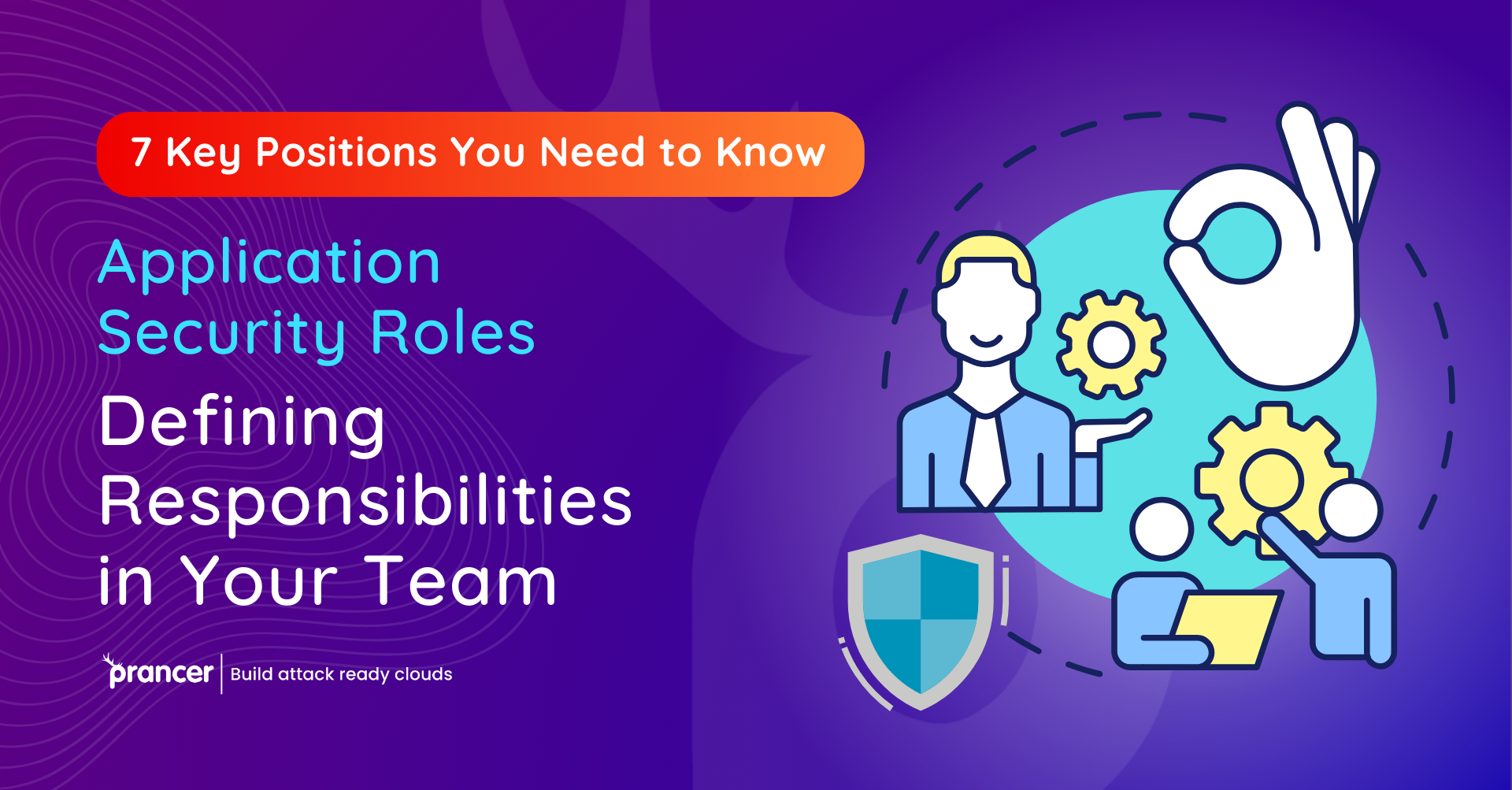

In the rapidly changing field of cyber security, it is important to have clearly defined application security functions in a team for effective defense. At the heart of this process is a combination of unique functions, responsible for various aspects associated with application security. The “Automated Penetration Testing” arises as center of attention for the significance to show vulnerabilities among these. The goal of this blog is to clarify the different application security roles that need to be in place as part of an overall cybersecurity plan, highlighting their importance in protecting your organization’s digital assets. Through the incorporation of Prancer’s knowledge, these roles become more relevant in a bid to provide framework for protecting applications from different cyber threats.
An Application Security Administrator plays a central role in monitoring the overall security states for software applications. The position entails monitoring adherence to security policies, controlling access and updating proper protocols for the same. The administrator also coordinates the automated penetration testing, which is an essential appliance of the application security roles that helps in identifying and fixing possible weaknesses.
1- Security Analyst: Monitor and analyze the organization’s security posture on an ongoing basis, recommending improvements to align with CISO’s strategy. They contribute significantly in the comprehension of the current threat landscape and how to integrate it with application security roles.
2- Penetration Tester: Focuses on automated application penetration testing, or conducting automatable attacks and identifying vulnerabilities in applications.
3- Security Architect: Builds secure designs and layers for applications. They also develop the strategic framework which other application security roles are based on.
4- Compliance Officer: A key consideration of application security roles in this area is that it helps to ensure that all the adopted or taken security measures adhere to and comply with regulatory standards as well as laws.
5- Incident Responder: Manages the aftermath of security breaches and attacks, minimising their impact and leading to recovery. Their role is critical in reducing the impact of security incidents.
6- Security Software Developer: Building security into the software development life cycle makes a case that starts with application security roles.
7- Security Trainer/Educator: Responsible for training the team on security best practices, and new threats to ensure all members are able to effectively carry out their application security roles.
Including Prancer in these Application securities roles improves the general security posture. In order to provide cutting-edge automated penetration testing tools, specialized training and contribute towards strategic security planning, Prancer’s are playing their part. This makes sure that all application security roles have the tools and know how to guard their organization’s assets effectively.
According to different application security positions, automated penetration testing plays crucial role in the identification of threats that can be used by cyber criminals. These tests mimic live attacks, thus assisting in identifying security loopholes beforehand.
Different roles in a team are crucial for an effective defense strategy, within the ever-changing world of cybersecurity that now requires Automated Penetration Testing as one more element. Roles such as Security Analysts, Penetration Testers, Security Architects and Compliance Officers are critical towards the identification and mitigation of cyber threats. Prancer has the know-how in automated penetration testing to boot as this area requires sophisticated tools and knowledge for these positions. This approach allows for a complete framework to protect against various cyber threats thereby improving the overall security posture.
Importance of Application Security Administrator
The emphasis of application security management is made on the tasks performed by The Application Security Administrator. This task includes the watch of systemic security status and also the rules obedience together with controlling access management. This involves coordinating penetration testing. This is an integral process in identifying and addressing any possible vulnerabilities likely to compromise the security of the application.
Diversifying Responsibilities: Key roles of Cybersecurity Teams
Security Analyst: Security Analysts have an very important role in identifying the different changes taking place within threat landscapes because they are built to continually monitor and analyze organizations’ security postures. Their perspectiv
Penetration Tester: Penetration Testers are the experts in conducting automated penetration testing to emulate the cyber-attacks and identify any vulnerabilities within applications. Their knowledge becomes very significant during the point of time, when they can prevent the security threats beforehand.
Security Architect: Security Architects build the secure application design and act as a basis for which other security roles create their own strategic framework. Their solutions ensure that the applications have many security layers from their onset.
Compliance Officer: This post makes sure that all security measures are in compliance with the established management regulations and also are subject to legal statutes. First, their surveillance is quite essential when it comes to the ethical and also legal implementation of cybersecurity practices by an organization.
Incident Responder: If an incident takes place, the Incident Responders handle the situation to minimize its effect and support in recovery. It is in the very essence of limiting cyber incident consequences that their rapid response should be the first.
Security Software Developer: It is very interesting to say that the practice of Security Software Developers who integrate security across all stages, from early on in the life cycle.
Security Trainer/Educator: Their responsibility is to instruct the team on security standards and also about new threats. However, the role is very basic in ensuring that all the members of a team are able to perform their security responsibility well.
The Role that Prancer Plays in fortifying the Application’s security Roles
Prancer’s tools and knowledge integration has a very remarkable impact on the level of security posture an organisation can get to. Prancer provides specialized tools for the automated penetration testing, training as well as strategic security consultancy. This integration guarantees that all the positions are adequately positioned and also enlightened to effectively defend the company’s digital assets.
Automated Penetration Testing: A Cornerstone in Cybersecurity
It is an very essential tool in all the roles of application security. It resembles real cyber attacks preparing people to pre-empt and close the breach points. This preemptive approach is very much required in a continuously changing cyber threat environment.
A number of functions in a comprehensive defense policy.
In the field of cyber security, a large variety in the team composition is highly important. Security Analysts, Penetration Testers and also the roles of Security Architects and Compliance Officers play a very crucial role in detecting as well as eradicating various cyber threats. Complementing manual penetration testing with Prancer’s knowledge and advanced tools in the automated pen test makes these roles much stronger than a framework against massive cyber threats as well as also increases overall defensive posture.
Penetration testing as a very strategic element of the cybersecurity.
But automated penetration testing is not only a very technical process; it also embodies one of the strategic pillars for cybersecurity. It is a very important function in the early threat detection and prevention. By conducting fake attacks, it provides an authentic assessment of a the mobile application’s vulnerability that allow the teams to strengthen their defences before actual breaches take place.
Symbiosis of the Roles and Automated Penetration Testing
The implantation of the diverse roles that cybersecurity teams have into an automated penetration testing greatly enhances its performance. All roles – from analysts to developers are involved in the whole security approach, where automated testing plays an very important role within it. This synergy does not only identify but also mitigate the weaknesses in an all-around manner that aligns with organization’s security strategy.
Emerging cybersecurity needs and the autonomous testing are very important.
As cybersecurity threats keep on appearing, so do the strategies and tools used against them. The boundary of this evolution is the automated penetration testing process that offers a powerful and yet an efficient tool for protection apps. It has a capacity to adapt and react quickly in the response for any new threats, which makes it an essential tool of the cyber security.
A Unified Front in Cybersecurity
The synergy of an integrated cybersecurity team, combined with the integration with automated penetration testing results in a very unique defensive shield for many forms of possible attacks. The employment of such tools as Prancer’s solutions makes the practices that each role has much more holistic and proactive in the matters related to application security. As cyber security threats evolve over time, becoming more advanced and complex, the combination of highly specialized roles together with expert testing procedures will always be a crucial factor in protecting digital assets as an omnipresent setting where digitization continues to grow.
Conclusion
Establishing inherent application security roles in your cyber defense team is transformative. The Security Analyst to the Security Trainer provides critical support in keeping a secure environment. This framework is further fortified by incorporating Prancer’s expertise, particularly in automating penetration testing. Organizations taking note of and incorporating these, key roles are set to develop a more comprehensive and efficient application security strategy that guarantees their digital landscape fortified against new threats.
